Making Suffering Meaningful
Who hasn’t suffered? Suffering may stab us periodically, like a toothache or a friend’s betrayal. Or we may be awash in it constantly, as when we have a chronic illness. The mystery of suffering has always tormented us—in particular, why do the innocent suffer? Why is there such devastating misery in Ukraine? No answer satisfies. We can’t fully explain this mystery, other than attributing it to original sin. God doesn’t even give Job, the quintessential sufferer, a satisfying answer, but basically just says, “Who are you to question me?”
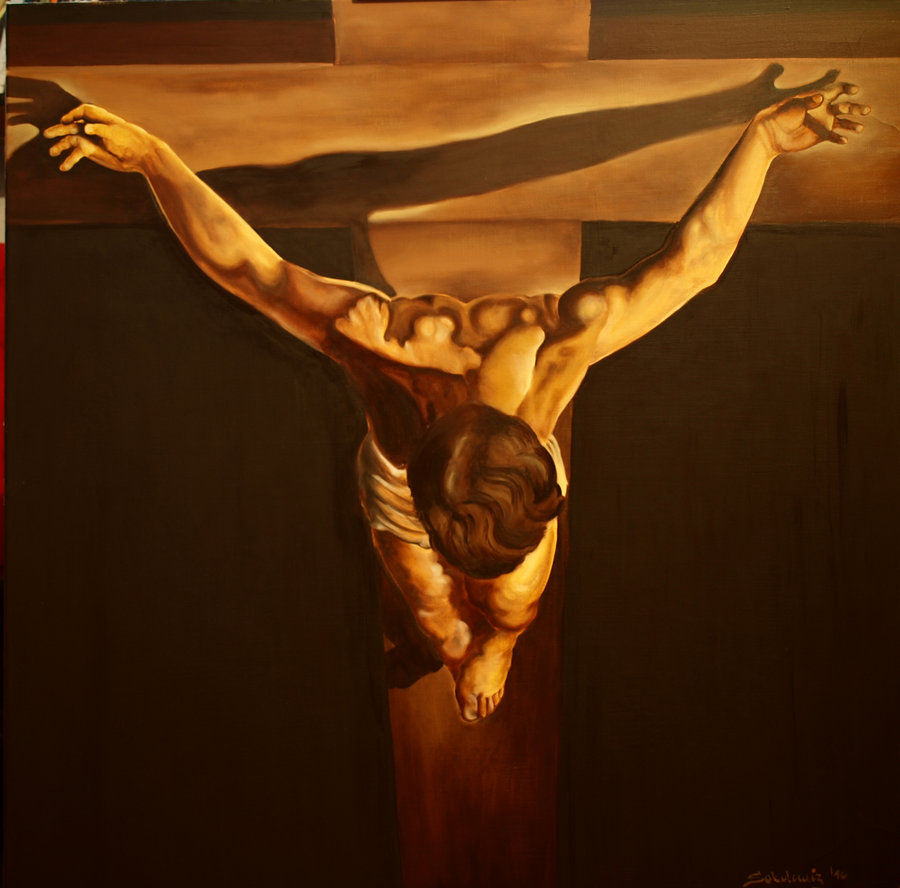
But we take comfort in the fact that as Jesus, God experienced suffering, both mental anguish and excruciating physical pain. He cried over Jerusalem and the death of his friend Lazarus. He died by the cruelest execution Romans invented. In doing so, Jesus infused suffering with meaning. By his agony and death, Jesus redeemed the world. When we unite our suffering with his and offer it to the Father, we share his cross, we become partners in his act of redemption.
(more…)A Modern Day Holy Woman (Part II)
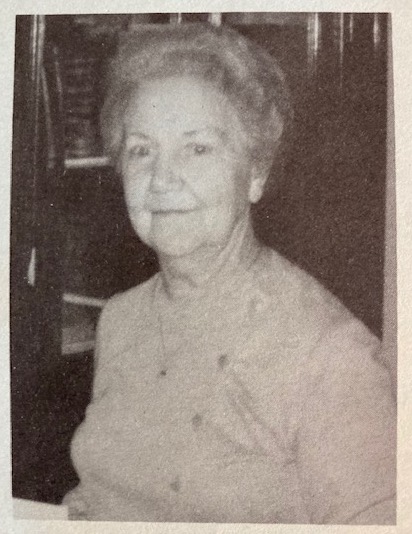
As editor of the Christ Our Life textbook series, I once lived in Chicago to facilitate reaching the publishing deadline. For two weeks I lived in a convent that was a bus ride away from the publishing house. Then for the remaining eight weeks, Father Flaherty, the Jesuit director of the company, located a place within walking distance: The Shelter of God’s Love. This move introduced me to Rosemary Koenig, the remarkable woman who founded the shelter in a large, empty convent.
When I met Rosemary, she was not even five feet tall, a white-haired woman with sparkling blue eyes and a pug nose. At the shelter this spunky lady formed a community with disabled people who had no other place to live. In some cases, their families had rejected them. I joined a blind woman as well as six older women and girls who were afflicted with diseases like cerebral palsy, multiple sclerosis, and spinal bifida. The cook, Gina (from Hungary I think) and her daughter, who was about five-years-old, also lived there. Rosemary took me to my room and proudly said, “Cardinal Bernadin slept here when he visited and said Mass for us.”

Because the Blessed Sacrament was still present in the large convent chapel, Rosemary liked to say, “The sisters left, but Jesus stayed.” I doubt that she will ever be canonized (for one thing, the process is expensive), but I’m pretty sure she made it through heaven’s gates.
Rosemary gladly welcomed me to her house, especially because she had just written her autobiography (Only One Set of Footprints) and was hoping for an editor/proofreader. She always believed that God met all her needs. That same year when she wished she had a helper, Katherine, a young, talented woman, appeared on her doorstep saying that she wanted to take a year off work and volunteer at the shelter. Repeatedly God provided for Rosemary by unexpected donations of money and furniture in addition to volunteer services. When the shelter needed an elevator, a fundraiser was held. The amount collected was $8,077, which turned out to be the exact cost of the elevator.

Why did Rosemary found this shelter? When she was married and had four children under ten years of age, her husband walked out! Rosemary was devastated but survived because of the kindness of her parents and the financial assistance of her brother-in-law, Monsignor Koenig. She went to work at schools, drove for the Red Cross, and participated in the Person to Person Volunteers at her parish, helping families, shut-ins, and the elderly.
Once Rosemary’s children were grown and she retired, she decided to pass on kindness by helping those in need, namely homeless disabled persons. Although she was elderly and had very little revenue, doggedly she jumped through the hoops required for starting her nonprofit venture. She also went in search of a building. After several rejections, she met a pastor who agreed to lease his empty convent at St. Andrew Parish for a year. She explained, “God led me to a priest who was as crazy as I was.”
Each evening after supper her little community stayed at the table and prayed intercessory prayer for the intentions that people had placed in the Infant’s crib in the room. Occasionally a priest celebrated Mass, and once while I was there, a priest conducted a Bible study. Each year the shelter gave a Christmas party for the children at St. Andrew School.
Rosemary published a newsletter and held a yearly fundraiser to garner income for the shelter. Her charismatic personality won her many friends. After I left, I received her newsletters as well as personal letters that kept me informed about my friends in the Shelter. Rosemary’s other project was to send me personal letters from Our Lord signed, “Your dearest friend, Jesus.”
Despite being a senior citizen herself, Rosemary went on to open a second Shelter of God’s Love. This house was for older people who used up their income on their children and had no place to live.
Rosemary died in 2005 at the age of 92. RIP.
I’m sure other hidden saints like Rosemary have stepped into your life, perhaps your parents, grandparents, friends. You might take some time to think about them today and thank God for the grace to know them.
• Have you met someone you would you consider a saint? Why?
Saints Canonized and Not (Part 1)
Recently a religion teacher told me that when she asked her students to name saints, they were stymied…until they began naming schools nearby named St. Something. What a pity that saints are not better known! Why is this? For one thing, many babies are named, not for saints, but for the sound or creativeness of the name. So we have Diamond, Apple, Blue, and Elon Musk’s baby’s name: X Æ A-12. In these cases, the children are deprived of a patron saint. Some people prefer praying directly to God instead of asking saints to intercede and so ignore these potential allies.
Becoming familiar with the lives of the saints is beneficial. Some might become friends we can turn to in time of need. Everyone knows to pray to St. Anthony to uncover lost things. But most other saints have their specialties too. St. Apollonia takes care of tooth problems. St. Peregrine can be invoked for cancer patients. St. Lucy is in charge of eyes. St. Dympthna helps with mental problems. Countries are entrusted to a patron saint or two. The United States has the queen of all saints, the Immaculate Conception.
Saints serve as models of holiness. They exemplify what love of God and neighbor means. Like us they are human and therefore flawed. The majority of saints were priests and women religious, probably because it takes time and money to support the process of canonization. Many saints walk among us and will never be canonized.
I’d like to introduce you to two saints you may not know of. Next week I’ll blog about an extraordinary woman I met who in my opinion is an uncanonized saint.
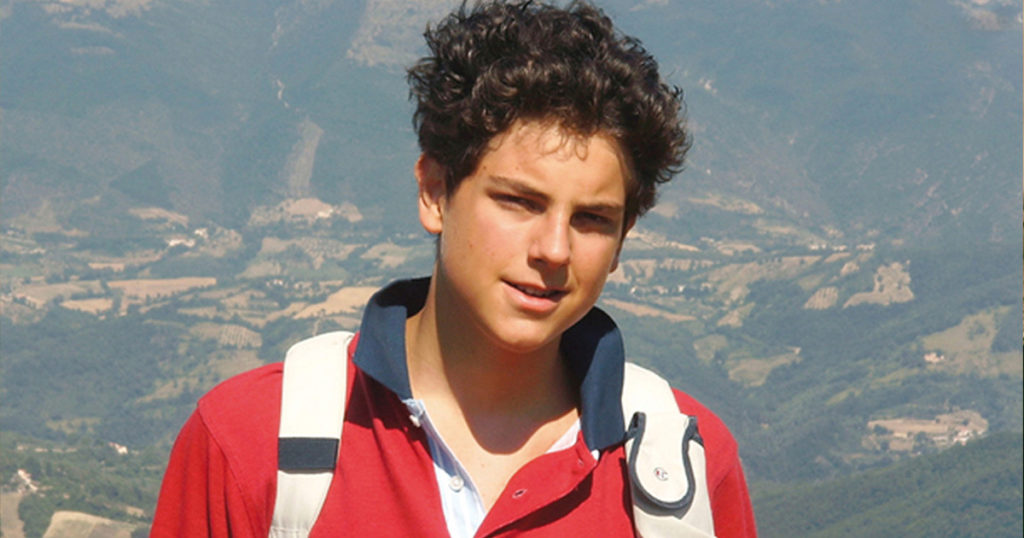
First, Carlo Acutis, who died at age 15 in 2006. Granted, he is not a fully official saint yet, only declared “Blessed,” in 2022. He would become the first millennial saint. Although his parents were not practicing Catholics at first, Carlo was pious from an early age. He went to daily Mass. He was a good friend to others and defended those who were being bullied.
A whiz at the computer, he compiled all miracles related to the Eucharist and created a website for them. When he was diagnosed with leukemia, he offered his sufferings for the Pope and the Church. An interesting observation he made: “All are born as originals but may die as photocopies.”
You can view a collection of photos and video clips about Carlo here: https://youtu.be/BbKwGm5aDxg
Second, I just learned about St. Dulce Pontes, known as the Brazilian Mother Teresa. As a child named Maria Rita, she loved soccer. When she was seven, her mother died. After visiting a slum at the age of thirteen, she brought poor people home and cared for them. Her sister joked that the beggars at the door frightened away all her suitors. After graduating from high school, she entered the convent and took the name Dulce, after her mother. As a Sister, she taught poor children and their parents to read and write. When she was twenty-two, she founded a Catholic workers organization to support the working poor. Then she started a school for them.
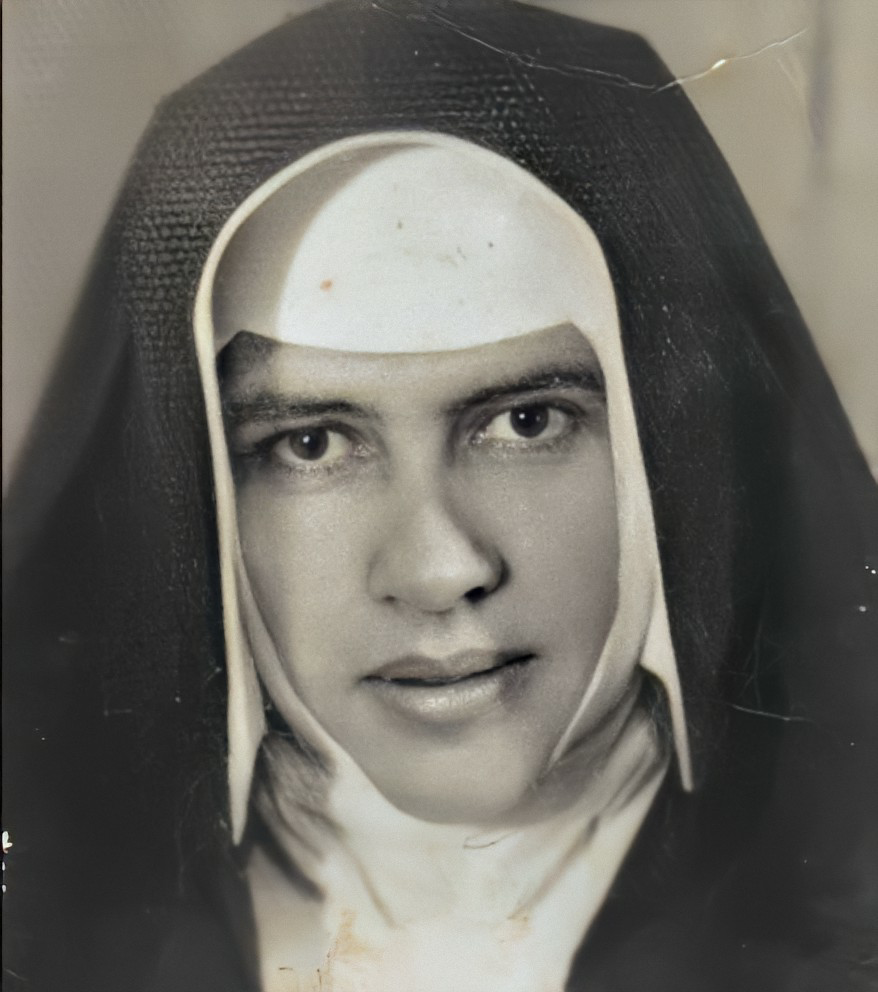
Dulce begged for the poor and found housing for them—even in her convent’s chicken yard, which is a hospital today. She founded the Charitable Works Foundation of Sister Dulce, establishing nursing homes, an orphanage, and a free clinic. She played soccer with orphans and played the accordion for workers. When a bus crashed and caught fire, Sister Dulce, standing on a crate, broke a window and pulled twelve passengers to safety. Even poor health in the last thirty years of her life did not stop her from ministering to the poor. She was nominated for a Nobel Prize, and once Brazil’s president kissed her feet. Sister Dulce died in 1992 at the age of seventy-seven and was canonized in 2019.
• Which Saint do you consider a good friend? Which one do you admire most?
Sisters of Notre Dame Crucifix and Its Artist
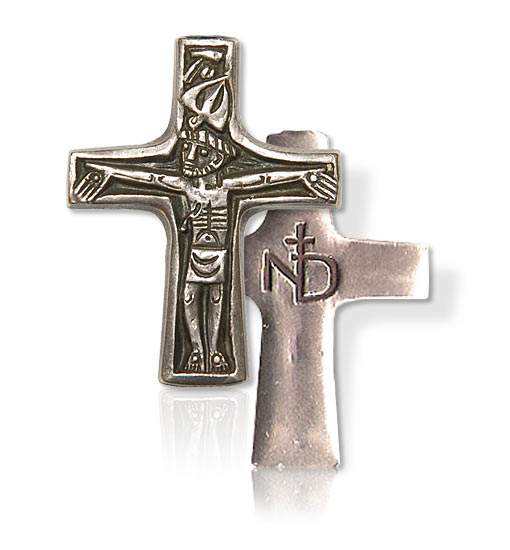
This morning during meditation I asked the Holy Spirit for an idea for this blog. During the past years I’ve already covered most topics related to our faith. This creative Spirit did not disappoint. As I sat down before my computer, strangely my crucifix was clearly reflected, centered, in the shiny black apple at the bottom of my iMac. I had never noticed this before. I took it as a direct divine message, which led to some interesting discoveries. You might also find them interesting.
When we first received this crucifix, I did not care for it. I preferred our former one that depicted the crucified Jesus as usual. An understanding of the symbolism, however, gave me a greater appreciation of our new crucifix. For one thing, the entire Trinity is present. The Father’s right hand at the top is sending the Holy Spirit in the form of a dove to bring about our salvation. This is the same trio that was present at the baptism of Jesus. The Father has not abandoned Jesus, but is with him. The Spirit of God will draw new life out of death.
The face of Jesus is not tortured but reflects the dignity and peace he had when submitting to his Father’s will. The hands of Jesus are exaggerated and point downward, breaking through the frame. They show him extending his love to all humankind.
The bare body of Jesus shows his humanness. As the artist once explained, “For me Christ is not an otherworldly figure floating over humanity in a long robe. He is in our midst as a simple farmhand or a cabinet-maker.”
The crown of thorns is a regal crown, for Jesus is truly King of the universe.
On the reverse side of the crucifix is a symbol of our congregation. The ND stands for Notre Dame, Our Lady, who was one with her Son in his sacrifice for us. The cross atop the letters reminds us that St. Julie Billiart, the origin of our congregation, predicted that our lives would be marked by the cross. In that way we share in Our Lord’s redemptive action.
The Artist

Researching the German man responsible for our crucifix, Egino Weinert, unearthed some fascinating facts. He was a goldsmith, sculptor, and painter. His artwork has been described as “stylized and primitive and tender,” rather like folk art. I would agree.
Egino was born in 1920 as Franz Stanislaus Gunter Przybilski. Later his father changed the family name to Weinert. When Franz entered a Benedictine Abbey at the age of fourteen, he received the name Egino.
In 1941 he passed his examination as a goldsmith and silversmith with distinction. That same year he was arrested and imprisoned for refusing to give the Nazi salute. During World War II he was drafted into the Navy and fought from 1941 to 1945. He was charged with “undermining military strength” and sentenced to death. He escaped and hid from the Nazis with the help of two princes.
At the end of the war, Egino returned to the monastery. In 1945 at his parents’ house in Berlin, he lost his right hand due to a booby trap the Red Army had installed as an electrical fuse. For over a year he developed goldsmithing techniques with his left hand and practiced.
In 1947, Egino attended the Cologne factory school where he learned various crafts. A few weeks before he was to make perpetual vows in 1949, he was asked to leave the monastery. The Benedictines were disturbed by the drawings of female nudes he brought from the art school and considered his art style too abstract.
Egino went on to establish his own studios and workshops where he produced numerous sacred objects. Several hundred churches house his works, such as altars, ambos, and tabernacles. He created works for Saint Pope John XXIII and Saint Pope John Paul II. Some of his pieces are in the Modern Art Gallery of the Vatican Museums. His specialty was enamel art.
In 1951 he married and had four children. After his wife died, he remarried. At the age of 92 he died.
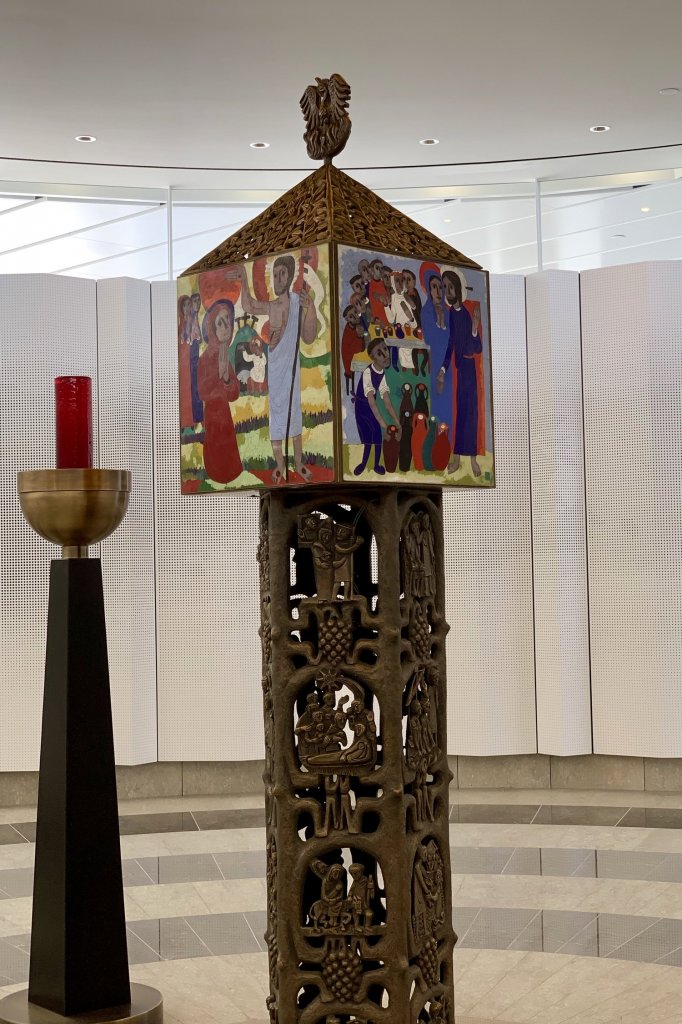
Interestingly, a medal designed by Egino is awarded as the Edith Stein Prize in Germany every two years. Also, the Christ Cathedral in the Diocese of Orange has the last tabernacle of enamel work he designed. His widow reluctantly parted with it. Scenes from Christ’s life are pictured on its four sides.
Here are a few of the artist’s other works:
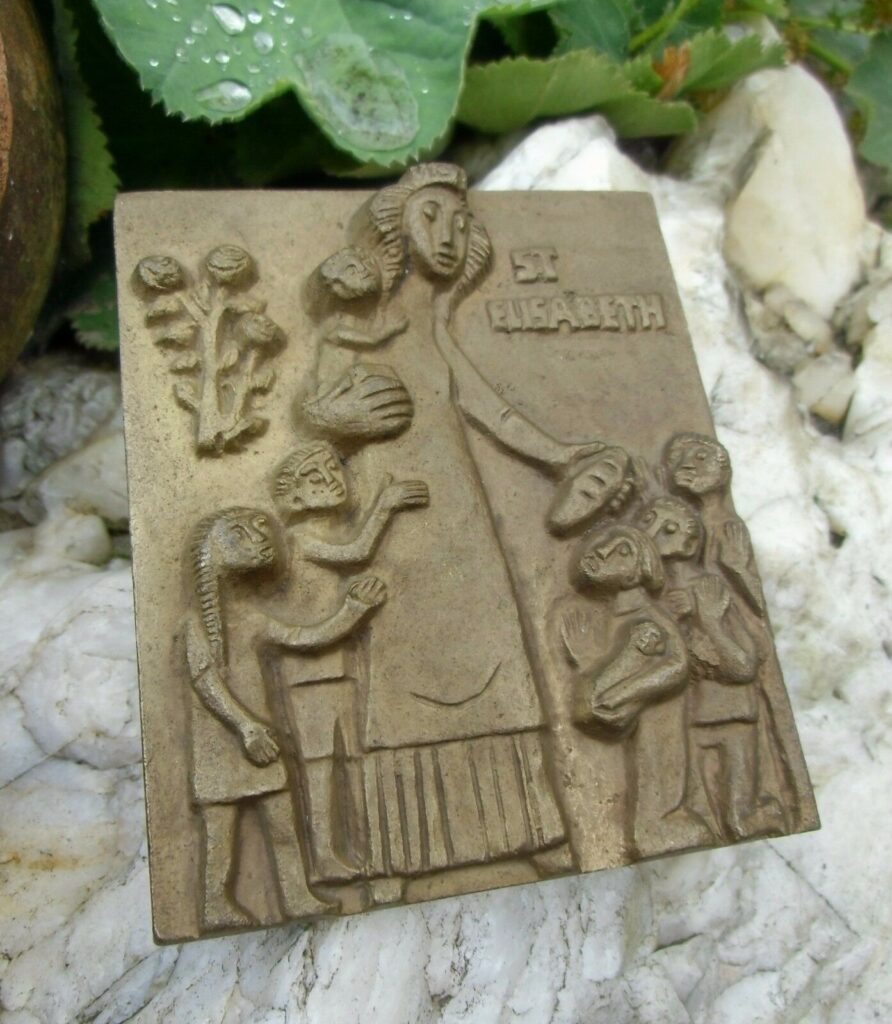
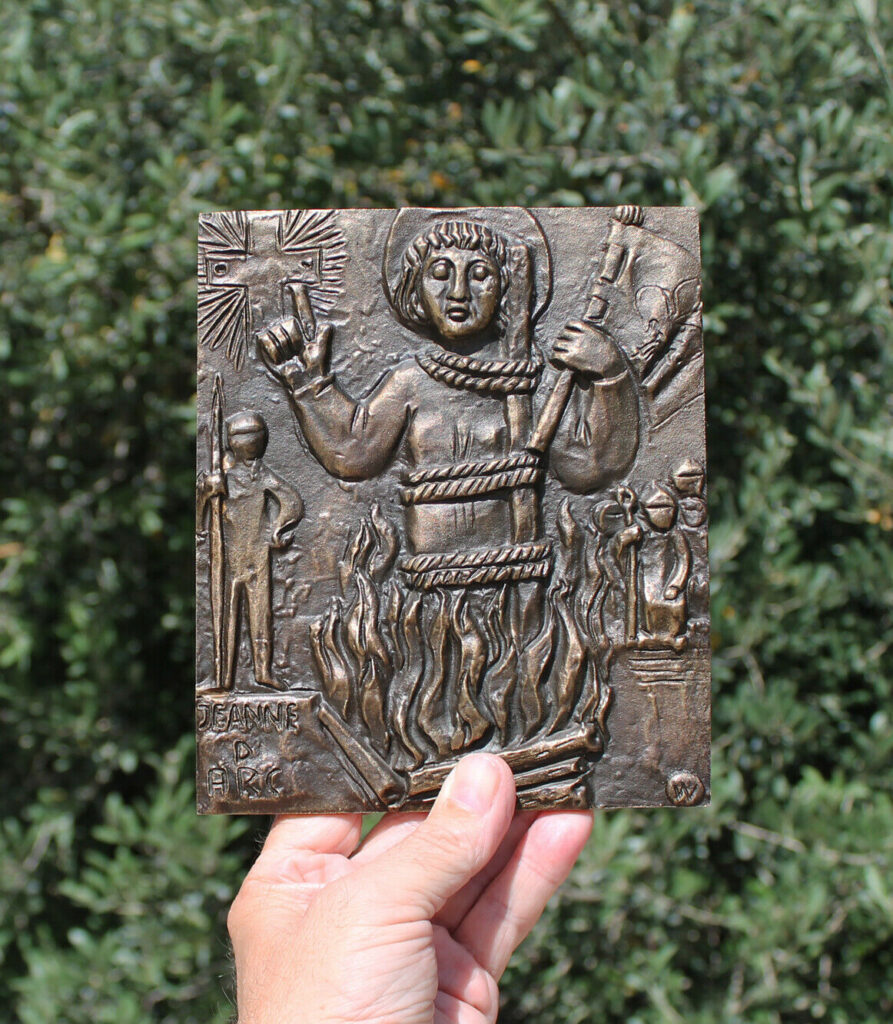
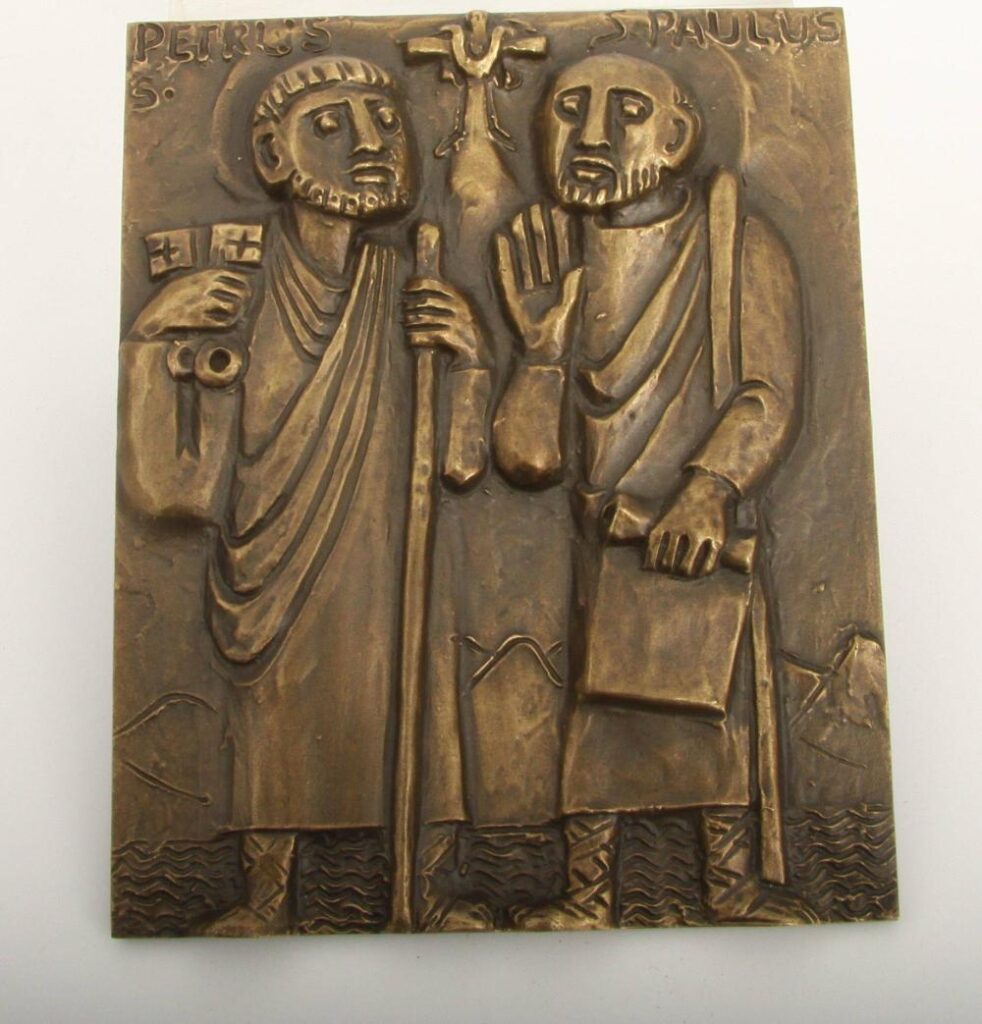
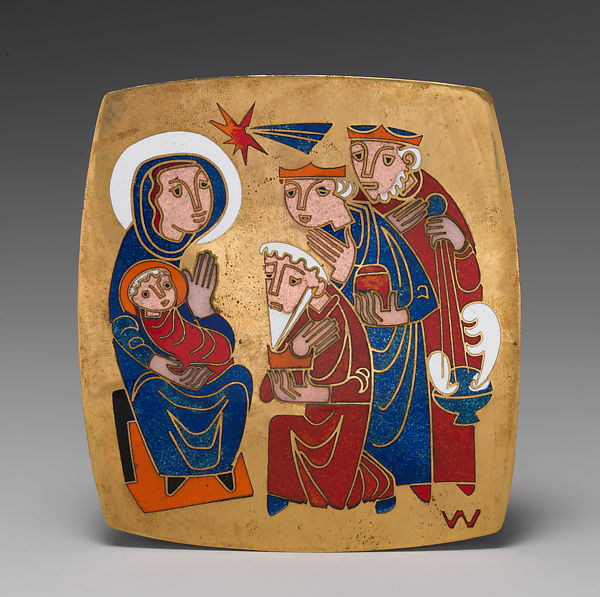
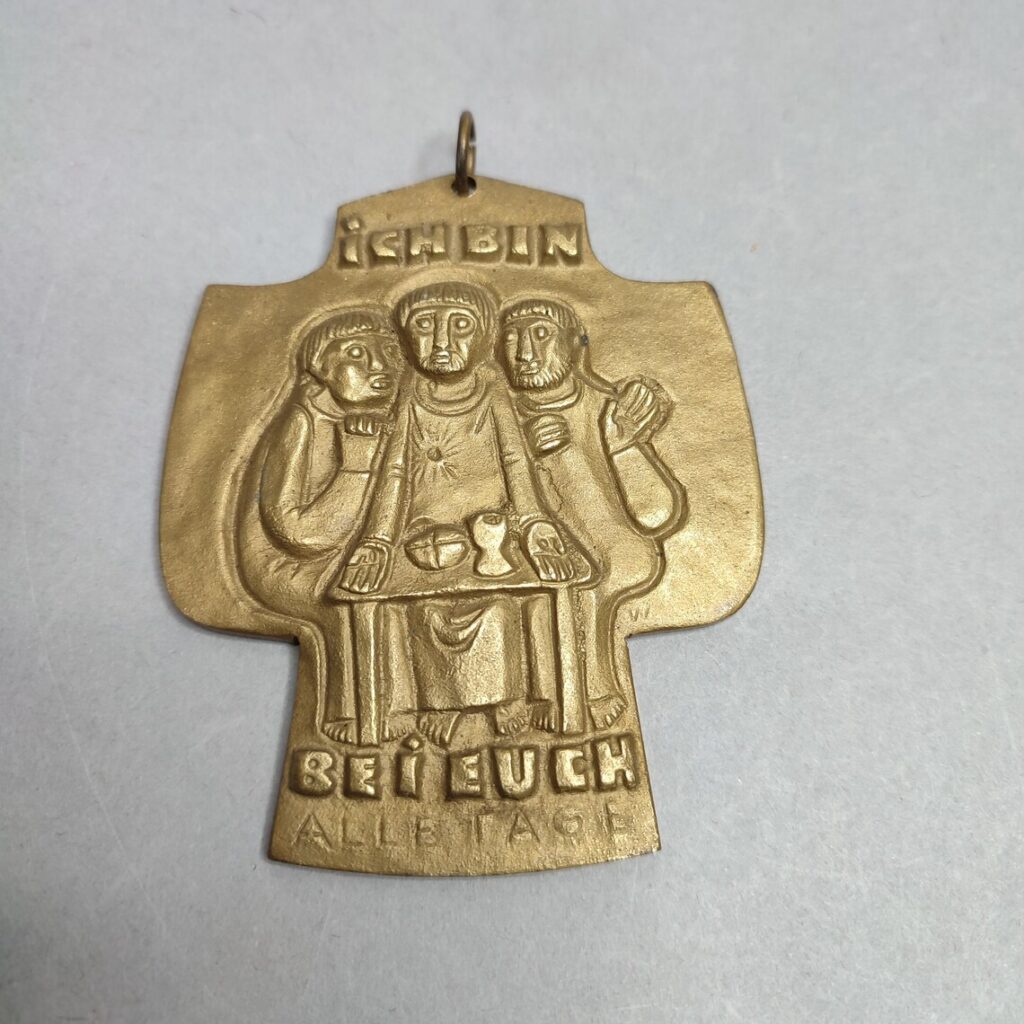
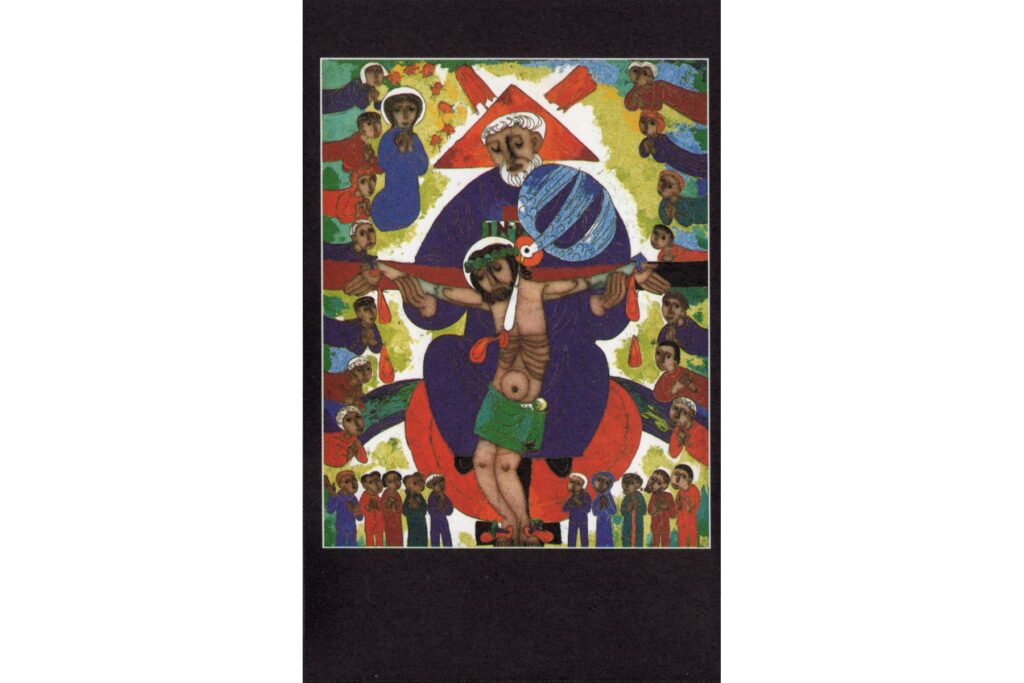
God’s Compliments

A compliment is something like a kiss through a veil.
~ Victor Hugo
It’s predictable: In Hallmark movies when two dating people are dressed up to go out, the man says, “You are beautiful,” and the woman replies, “You look good yourself,” or words to that effect. People in love and friends are quick to compliment each other. They notice and verbally acknowledge a physical trait (“Your new hairdo is very becoming,” “I like that suit,” “I love the way you laugh”); a skill (“You are so good in math,” “You really have a talent for drawing”); an action (“That was kind of you to offer her your seat” ); or a quality (“You have a great sense of humor”). An honest compliment makes the receiver happy. It exerts a stronger and sweeter impact when it is paid in the presence of other people.
A sincere compliment not only engenders joy in the person being praised but in the one who bestows it. As C. S. Lewis observed, “I think we delight to praise what we enjoy because the praise not merely expresses but completes the enjoyment; it is its appointed consummation.”
A compliment is like saying, “I admire this positive feature you have, and I love you for it.” The compliment boosts the recipient’s self-esteem and encourages him or her to continue what was praised. Most important, a compliment, like a thoughtful gift, fosters warm feelings for the one who gave it.
Yes, God Praises You!
Jesus was not stingy with compliments. On first meeting Nathaniel, he declared, “Here is truly an Israelite in whom there is no deceit!” (John 1:47). When the centurion professed his belief that Jesus could heal his servant from afar by merely speaking, Jesus said of him, “In no one in Israel have I found such faith” (Matthew 8:10). He told the overanxious Martha, who was bustling about, that her sister Mary, who was seated at his feet and listening to him, had “chosen the better part” (Luke 10:42). And he said to the tenacious Canaanite mother beseeching him to cure her daughter, “Woman, great is your faith!” (Matthew 15:28).
One day Jesus appeared to St. Thomas Aquinas and praised him, saying, “You have written well of me, Thomas. What would you desire as a reward?” Wisely Thomas gave the answer expected of someone in love with God, “Nothing but you, Lord.”
According to Scripture, God gives praise. St. John criticized those who do not confess their faith in Jesus because they preferred praise from people rather than from God. (John 12:42–43). God also extols those who abide by his law. (Romans 2:26–29). You can look forward to the time when the Lord comes because “then each one will receive commendation from God” (1 Corinthians 4:5).

Perhaps God compliments you during prayer when deep in your heart you hear words like, “Well done, good and faithful servant” and “I’m proud of you for holding firm against that temptation.” God may be virtually paying you a compliment when you pick up a book, not necessarily Scripture, and read a sentence of glowing praise.
At times God may speak through people who affirm you. A friend of mine was elated because after she confessed her sins, the priest commented, “That was a very good confession.” (She didn’t know he said that to most penitents!) One day someone emailed me that a PowerPoint presentation I had given was excellent and beautifully done, the best she’d heard on the topic. I interpreted her praise as God patting me on the back and saying, “Good work, Kathleen.”
Finally, C. S. Lewis identified a divine compliment that is mystifying at first glance. He named suffering “the intolerable compliment.” What does this mean?
Lewis explained that God loves you in “the deepest, most tragic, most inexorable sense” and designed a glorious destiny for you. But because God wants you to become the ideal you, he allows suffering and pain, trials, and tribulations to shape and perfect you. Lewis wrote in The Problem of Pain, “Whether we like it or not, God intends to give us what we need, not what we now think we want. Once more, we are embarrassed by the intolerable compliment, by too much love, not too little.”
The above thoughts are lifted from a chapter in my book A Love Affair with God: Twelve Traits.
Today consider complimenting as many people as you can! That would be a good Lenten practice.
• When has a compliment from God via a person motivated you to excel in something?
• What reasons would God have for praising you?






